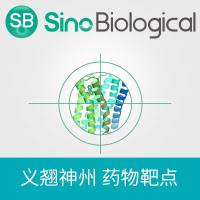Analysis of tRNA Editing in Native and Synthetic Substrates
互联网
669
The primary sequence of all nucleic acids in a cell contain 4 canonical nucleotides (G, A, T, and C for DNA and G, A, U, and C for RNA). However, post-transcriptionally, nucleic acids can undergo a number of chemical modifications, which may change their structure and function. tRNAs contain the most diverse array of post-transcriptionally added chemical groups that involve both editing and modification. Because editing and modification events can serve vital roles in cell function, it is important to develop techniques that allow for fast and accurate analysis of these events. This chapter describes the methods used to purify tRNAs from total native RNA pools and for subsequent analysis of their edited and modified states using reverse transcriptase-based approaches. These techniques, in combination with 2D-TLC, allow for the routine analysis and quantitation of edited and modified nucleotides in a fast, cost effective manner and without the need for special equipment such as HPLC or a mass spectrometer. Admittedly, the techniques described here are only applicable to a subset of post-transcriptional changes occurring in a tRNA such as C to U and A to I editing as well as modifications that prevent reverse transcriptase elongation; these have been highlighted throughout the chapter.









